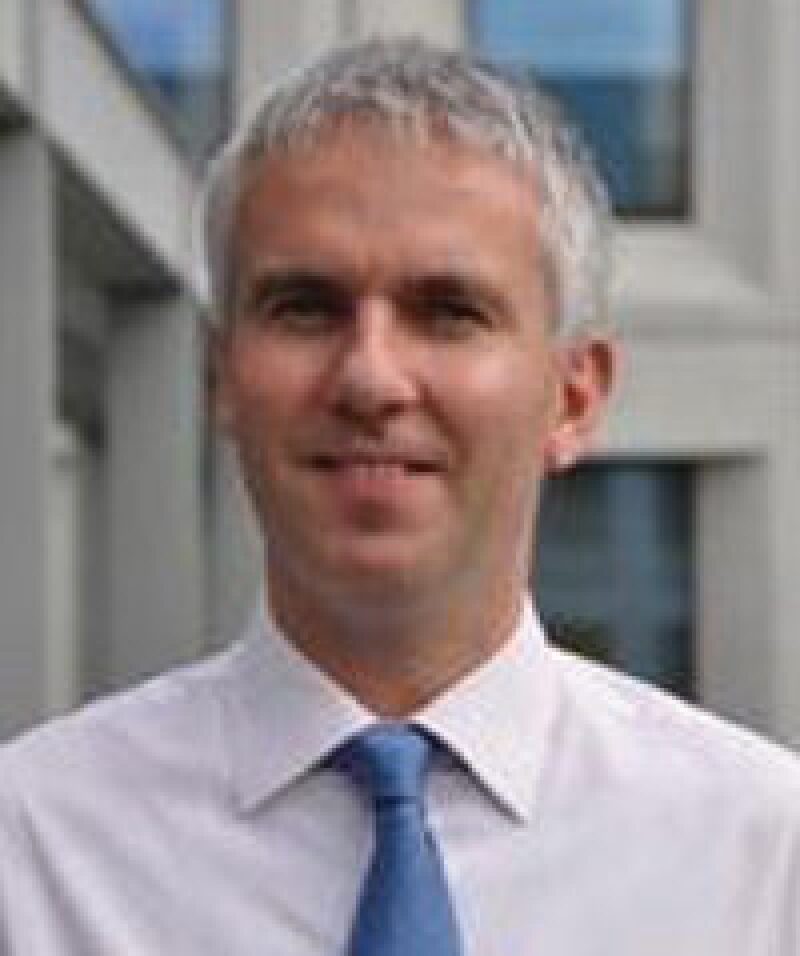How dependent is carbon sequestration on local and regional geology?
NG: Just like in oil and gas exploration, knowledge of the local and regional geology is critical for ensuring sufficient injectivity, containment, and economic performance of geologic storage sites. Even within a single basin, such as the Appalachian Basin, Battelle’s experience to date has indicated diversity in geologic feasibility. For example, we are finding some attractive potential target zones associated with secondary porosity in dolomite layers. Due to the presence of such zones along the Ohio Valley power generation corridor, these finds are critical for deployment of carbon capture and sequestration (CCS) in the region and for minimizing the need for long pipelines. However, local or regional continuity can be difficult to predict; thus, layers like these will require a sustained regional exploration effort for site characterization, including advanced seismic surveys, borehole stability, coring, and reservoir testing to prove commercial-scale viability.
NJ: Very. One interesting consideration is that most geology in close proximity to coal mines and power stations will have undergone the same burial and uplift that creates the accessible coal seams, thereby probably resulting in diagenesis and permeability/porosity degradation unless preserved by other means. Most of the formations we drill in oil and gas reservoirs haven’t had this impact, unless, for example, because of secondary migration. Another interesting consideration is that for large-scale carbon sequestration, we will have to displace significant volumes of fluid for the pressures to be managed safely below fracture initiation and propagation. Effectively finding, proving, and operating such large connected pore volumes, many times the size of what we are used to in oil and gas field development, will be a significant challenge. Therefore, the deep saline formations that CCS at some point in the future needs to use are really the unknown territory.
Should we expect CO2 floods for EOR to become more prevalent?
NG: Yes. Sustained high price of oil alone may be sufficient to increase interest in CO2 EOR floods, even without climate legislation. Climate change-related limitations on CO2 emissions are likely to boost this trend because of the potential for cost offsets with EOR. At the same time, there are significant barriers to overcome for commercial deployment outside the southwestern US, where much of the CO2 EOR work has taken place. In areas like the Midwestern US, these include availability of pure CO2, need for monitoring technologies to prove CO2 retention, permitting, unitization of fields, plugging requirements for old wells, and above all, the need for reliable long-term storage capacity for large-scale CO2 emissions sources.
NJ: I expect so. CO2 is probably the widest applicable EOR technique for the range of reservoir and fluid properties that exists today. However it is expensive to implement, given changes to the wells and processing facilities needed. Recent worldwide screening estimates suggest that 1 trillion bbl of extra oil (i.e., about the same as that produced to date globally) could be economically produced if low-cost CO2 is available at scale. Interestingly, this EOR-based demand for CO2 is enough to satisfy the output from the first 45 years of CCS implementation. It sounds like a win-win situation to me, and would give the time necessary to find, prove, and develop the more risky and costly saline aquifers.
Do you feel that there has been an industrywide consensus on climate change thus far? Or are there still largely varying views within the industry?
NG: Not really. My perception is that during the last couple of years, the climate consensus within the energy companies has become a bit more elusive, in part because of the lack of clear political consensus. There is an increasing wait-and-see attitude, and perhaps a sense of confusion, toward the climate science and also policy initiatives that are needed to resolve the stalemate at both national and international levels.
NJ: I hear of varying views still as to the cause of climate change, which I believe is only healthy in any scientific debate. I sometimes think this is more prevalent in our industry than others, but don’t think this itself is because of anything else but the fact that we work on similar science. Let me explain, our geoscientists work with formations that are millions of years old and have therefore gone through previous periods of climatic change. We also work with complicated simulation models populated with only a limited data set, and therefore know there is uncertainty in such predictions. You can obviously suppose then why some question climate change causes and effects that others have proposed. Of course there may be some that dismiss climate change purely as a means to justify their own choice to work in the fossil fuel industry. However, all that I have spoken to have some scientific reasoning for their opinion. Myself, I recognize that I am certainly not qualified well enough to have any other opinion than that held by the majority of actual climate scientists and instead rely on the scientific process to make informed decisions from which we should act.
“energy companies have to first develop a stronger scientific consensus within the industry around the issue of climate change.” – Neeraj Gupta
How much ongoing research is conducted by energy companies regarding the issue of climate change?
NG: The science of climate change has been researched primarily by universities and other research institutes, mainly with government funding in most countries. Although energy companies have funded some research on climate science, their main focus for both internal research and sponsorship of external research has been on energy technologies and mitigation options. This includes research and demonstrations on CCS technologies, energy efficiency, and alternative energy sources. For example, a group of coal companies and coal-dependent utilities are conducting the FutureGen demonstration program with the US Department of Energy (DOE) cofunding. Similarly, DOE’s Clean Coal Power Initiative programs bring together coal and oil companies to conduct CCS demonstrations. The combined value of these programs in the US alone will be worth several billion dollars, when completed. On a personal level, it has been highly satisfying to be involved in some of these major national initiatives.
NJ: One of the largest externally sponsored areas of research I know of is by ExxonMobil, of the GCEP project (Global Climate and Energy Project) out of Stanford University. This has been ongoing since 2002 and will cost the companies involved USD 225 million, with ExxonMobil having already contributed a reported USD 100 million as of 2006. Additionally ExxonMobil is also the largest spender on CCS-related R&D and has by far the largest number of patents in CO2 capture.
What role do you think energy companies can play in the larger picture of educating the public about climate change?
NG: I think energy companies have to first develop a stronger scientific consensus within the industry around the issue of climate change. Some of the larger global companies have the resources to evaluate the relevant climate data and help clear the scientific uncertainty and also perform a stronger advocacy role with policy-makers. Furthermore, they can also provide customer outreach about the reduction in carbon footprint, energy conservation, acceptance of mitigation technologies, and the switch to climate-friendly products. There is a significant need for building public awareness of geologic storage options, and the energy companies are well placed to do this.
NJ: Educating the public is probably done more effectively by governments rather than energy companies, whose motives will always be viewed by some with skepticism. Instead, the role for companies should be to assist in the implementation of governmental policies regarding climate change.
There is much debate on climate change. Has this hindered progress on any new plays or R&D efforts?
NG: In the oil and gas domain, the climate issue has not, so far, had a major impact on developing new plays. This is, in part, because of the growing demand for energy in emerging economies. Even with the heightened debate on climate change, R&D continues to advance the state of CCS technology. For example, the potential CO2 emissions, especially from gas processing, have been factored into developing new projects such as the Gorgon field in Australia and In Salah in Algeria, which have included geologic storage to mitigate climate concerns. There seems to be increasing impact on developing new coal-based energy facilities, especially in the US, Europe, Australia, and Japan, where potential CO2 emissions have been a factor in decisions about new capital investments.
NJ: I think that climate change is bringing sustainable progress to the oil and gas industry, in terms of improving our consideration of long-term impacts, and the wider implications our work has on the environment and society. We are becoming smarter in our planning, more efficient in our operations, and are generally becoming less focused on short-term gains.
Do you think the BP incident in the Gulf of Mexico will intensify the debate on the broader topic of energy companies’ responsibilities toward the environment?
NG: For a while it appeared to be the case. However, over the last few months, I have noticed a sharp decrease in coverage of the incident and certainly the level of debate is not as visible in the media. Still, the incident is likely to have a significant long-term influence on the operational and environmental philosophies of the energy companies and also in the regulatory requirements for exploration and production.
NJ: Undoubtedly yes. It will bring questions that will have to be answered, and the level of scrutiny in today’s society may mean that some regulations will be made tougher where uncertainty and risk are perceived to remain.
“Climate change is bringing sustainable progress to the oil and gas industry, in terms of improving our consideration of longterm impacts, and the wider implications our work has on the environment and society.” – Nigel Jenvey
Most of the oil majors are investing in CCS technology. Is there a realistic business case to take this forward? Do we need any game changer or government incentives to take this to the next level?
NG: CCS is fundamentally a climate mitigation technology. Therefore, the only business case for commercial implementation will come through the regulations on CO2 emissions. In the early years, the technology development and deployment will strongly depend on the government-funded demonstrations. These demonstrations and early commercial projects will also need a predictable regulatory framework, cost recovery mechanisms, and a focus on issues such as long-term liability and pore-space ownership. Battelle’s view is that companies that can develop the scientific knowhow and institutional mechanisms to answer these questions will be well placed to have a role in an eventual commercial CCS market.
NJ: I expect that a realistic business case for CCS will always need some form of government incentive to establish the carbon price needed to pay for capture and transportation infrastructure. The cost of storage can be relatively low when integrated with existing knowledge, infrastructure, and operations that exist in oil and gas field locations. However the main increase in the effective cost of storage that has to be considered is that associated with the long-term risks of leakage and the financial security and liabilities that are imposed by regulations. Of course, there are some projects, such as those that I work on, where CCS and EOR are combined, and therefore it now becomes more conventional and realistic business, given the additional revenue source.
From a long-term viewpoint, say 50 years, do you believe there will be a fundamental change in the way oil and gas industry works because of various emission policies in place or developments in carbon capture technology (e.g., developing a field with CO2 EOR in mind)?
NG: I believe it could be seen the other way around, as CCS will build upon the successes of the oil and gas industry. For example, natural gas processing plants are becoming sources of CO2 for geologic storage in current major projects. Eventually, improvements in capture technologies, development of oil fields with an objective of maximizing CO2 storage, and development of monitoring technologies for CCS will play a significant role in the evolution of the oil and gas industry. Another possible trend is increasing collaboration and joint ventures between oil and coal companies. On the flip side, of course, there remains a possibility that 50 years from now, oil and gas will not be a primary source of energy because of dwindling supply or availability of other options.
NJ: Yes, I believe more companies will see value in lowering the carbon content of the oil and gas that they produce. This ability will become more of a competitive differentiator for greenfield developments, and indeed will drive a less progressively phased approach to field development than that to which we are accustomed, i.e., why not implement CO2 EOR before waterflooding, rather than when it is too late and too expensive?
What do you believe is the place (present and future) of renewable energies such as solar and wind power?
NG: There is no doubt that the share of renewable power in the energy mix will increase over time from the current very low baseline. The cost of deployment and geographic reach are significant challenges that must be overcome. The need for land for very large-scale deployment of these options will also become a limiting factor.
NJ: Increasing energy demands will have to be met through a variety of sources, and renewables have a growing part to play. What is important is that we need to develop a cost-effective and sustainable energy mix from which all of world society can benefit.

| Neeraj Gupta obtained bachelor’s and master’s degrees in geology from Panjab University, India, a master’s degree in geochemistry from George Washington University, and a doctoral degree in geological sciences, with emphasis on hydrogeology, from Ohio State University. He joined Battelle Memorial Institute in 1993 and has led Battelle’s efforts on geologic storage of carbon dioxide since 1996. In the AEP Mountaineer Plant Carbon Capture and Storage Project, Gupta leads the geologic storage assessment, and he is a principal investigator for field demonstrations under the Midwestern Regional Carbon Sequestration Partnership. He has authored or coauthored more than 75 reports, papers, and conference presentations. |

| Nigel Jenvey holds a bachelor’s degree in mining engineering and a master’s degree in petroleum engineering from Imperial College, London. He joined Maersk Oil and Gas in 2008, after holding a number of operational, technology, field development, and leadership roles with Texaco and Shell. Currently, Jenvey serves as a director of enhanced oil recovery (EOR) projects at Maersk, where he is coordinator of research and project portfolio opportunities. He has published multiple papers and served on several SPE committees, including EOR, carbon capture and sequestration (CCS), and reservoir management. Jenvey will chair an SPE CCS forum to be held 9–14 October in Faro, Portugal. |


